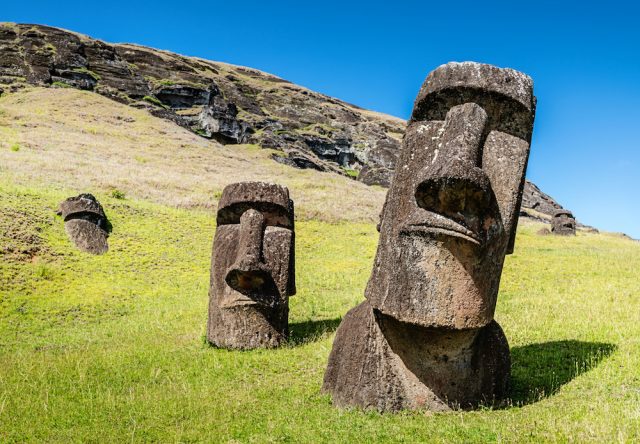This website uses cookies so that we can provide you with the best user experience possible. Cookie information is stored in your browser and performs functions such as recognising you when you return to our website and helping our team to understand which sections of the website you find most interesting and useful.
Wild grape vines of Easter Island identified
Wild vines that were found on Easter Island (Rapa Nui) have now been identified following genetic studies, confirming intentions to make wine on the island in the 19th century.

The research paper was published just in time for the long Easter weekend, revealing Easter Island has been hosting at least six different grape varieties since the 19th century with multiple vineyard sites around the island.
The grape vines, which have been left uncultivated for over a century, include País and Moscatel de Alejandría — two of the first Vitis vinifera varieties believed to have been planted in the Americas — as well as three native Criolla varieties and one as of yet unknown variety.
The five known varieties reveal that the grape vines most likely arrived to Easter Island from mainland Chile, however the unknown variety remains a mystery. “Based on its SSR haplotypic pattern [the unknown variety] probably had a direct European ancestry,” the research article, authored by several researchers, states.
The samples were taken from several sites around the island where the old vines still produce grapes — most notably in and around the Rano Kau crater.
Although there are historic references to vineyards being planted on the island in the late 1800s, when the missionaries left the island in the early 20th century the vineyards are believed to have been abandoned.
It is yet unknown if anyone successfully made wine from these vineyards, as there are no written records evidencing anything beyond the intention of using these vineyards for wine production. Commander Ignacio L. Gana speculated in 1870 that the island conditions were ideal for wine, comparable to Madeira, while other missionaries praised the quality of the grapes and vineyards.
The story of wine and grape vines on Easter Island was reignited six years ago by winemakers Alvaro Arriagada and Fernando Almeda, who planted new vines with local partners on the island and starting reproducing the old, wild vines in a nursery. Their new vines produced the first vintage of Rapa Nui sparkling wine last year, albeit in small, experimental quantities.
These experimental wines and the findings of the Patrimonial grapevine varieties from Rapa Nui: genetic characterisation and relationship with continental cultivars research paper is only the latest chapter in what is revealing itself to become a fascinating story of Easter Island wine.
Amanda Barnes is the drinks business´ regular South America correspondent and author of The South America Wine Guide.

